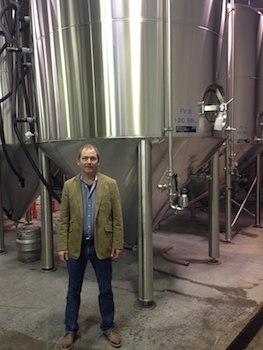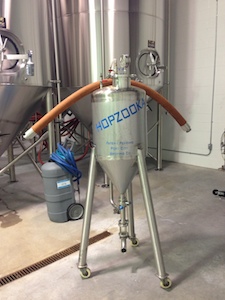
Located about seven miles from D.C. in neighboring Alexandria, Virginia, Port City opened its doors in February 2011 after founder and owner Bill Butcher decided to try his hands at the brewing game after 18 years in the wine business. Now before you make any rash judgments, let’s be clear that Mr. Butcher did not jump ship just to cash-in on the growing industry.
“I’ve always enjoyed great quality beer, and I’ve watched the craft beer business evolve over the past 15 years to become more and more like the fine wine business,” says Butcher.
Peering from behind the grapevine, Butcher saw that the mid-Atlantic region and particularly the District needed more local beer options.
“I found that D.C. was the only big city in the country that didn’t have a packaging microbrewery,” he recalls. “Obviously [D.C. has] a great food and drink market, so there was a lot of pent-up demand for local craft beer.”
With these thoughts in mind, Butcher decided to launch a brewery just outside the D.C. city limits in Alexandria and called it Port City, stemming from the fact that Alexandria has a rich history of being (that’s right, you guessed it) a major regional port.
According to Butcher, Port City’s mission is to brew full-flavored, complex beers that are also approachable and easy to drink. With their beers, they strive to achieve a delicate balance between “complexity that will hold the attention of a beer expert,” and an approachability that won’t lose or dissuade the casual beer drinker from knocking back a few pints.
Butcher is also very concerned about being involved with the local community. One of the more interesting and distinguishing of these endeavors is the story behind their Revival Oyster Stout. To craft this beer, Port City collaborates with the War Shore Oyster Company based in Vienna, Virginia. Every time they brew a new batch of the stout, War Shore brings them 3,000 fully shucked Chesapeake Bay oysters to be added during production. The name “Revival” comes from the fact that Port City donates 5% of the sales of the beer to the Oyster Recovery Partnership, an organization working to revive the oyster population in the Chesapeake Bay.
“I feel very strongly that it’s important for a craft brewery like us to give back to the community,” says Butcher. “We sell something that can be considered a luxury product, so we’re selling a facet of the good life. As a producer of a luxury beverage it’s…important to be involved.”
Not ones to back away from innovation, the team at Port City has also come up with a new way of blasting their beer with hops.

When it comes to the future, the guys and gals at Port City have what some might call aggressive plans. Over the next seven years, they plan to average a growth rate of 35% a year. Butcher recognizes the challenge, but he believes it’s possible due to both the craft beer industry explosion and the expansion of the local scene. This year, they plan to produce about 9,000 barrels, and capacity in their current building is 25,000 barrels a year, which is where they would be in year seven after the 35% a year growth rate.
“We’ll still be a small brewery, one of the smallest in the United States,” Butcher says. “The idea is to stay small and be profitable and tightly control our quality, and continually improve the quality and improve our distribution.”
If you’re ever in the D.C. area and would like to stop by for a drink or two, Port City’s tasting room is open Wednesday through Sunday, with brewery tours taking place on Fridays, Saturdays, and Sundays.
 American Craft Beer The Best Craft Beer, Breweries, Bars, Brewpubs, Beer Stores, And Restaurants Serving Serious Beer.
American Craft Beer The Best Craft Beer, Breweries, Bars, Brewpubs, Beer Stores, And Restaurants Serving Serious Beer.
